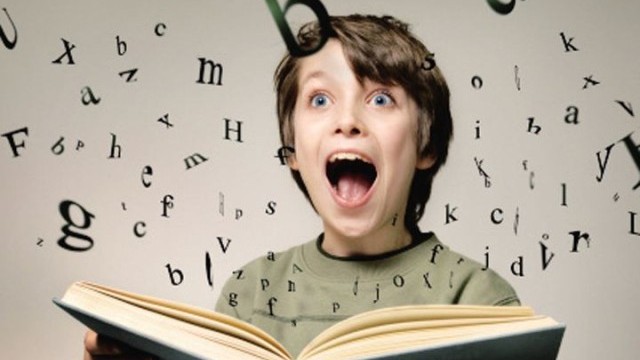英语四级暑期听力练习20
听力是四级考试中的重要题型,考生对这部分的复习一定不能松懈,考生可以充分利用暑期时间坚持练习听力,下面是一篇英语四级听力练习,快来练练吧。
Visitors to Washington, DC know about such tourist attractions as the Lincoln and Jefferson Memorials...the World War Two Memorial...the Washington Monument. But we'd like to tell you today about a very special monument, just across the Potomac River from Washington, in Arlington Virginia. The Marine Corps War Memorial, also called the Iwo Jima Memorial, is one of the largest free-standing statues in the world. Today we tell you about this memorial and the story behind it.
Visitor from Arlington, Virginia: "It's very overpowering. You can't help but think about all the lives that have been lost for our country."
Our program today is about one moment in time.
Joe Rosenthal's photo of Marines of the 28th Regiment of the Fifth Division raising the American flag atop Mount Suribachi, Iwo Jima, on February 23, 1945
Really, 1/400th of a second! That is the amount of time it took Associated Press photographer Joe Rosenthal to capture an historic image on film.
The photograph shows six men and an American flag during a battle in World War II. Joe Rosenthal took the picture on February 23, 1945, on the Pacific island of Iwo Jima. Japanese forces held the island. American Marines were attempting to capture it.
On the fourth day of battle, Marines fought to the top of Mount Suribachi, the tallest mountain on Iwo Jima. A small American flag was sent to the top. The Marines placed the flagpole in the ground, and raised the flag into the air.
But the flag could not be seen clearly far below. Commanding officers ordered the Marines to replace it with a much larger one.
Joe Rosenthal was among Marines when they heard there would be a flag ceremony. He wanted to capture the event on film. So he took his camera and climbed slowly up the mountain, avoiding marked landmines. But when he got to the top, it was too late. The ceremony had ended.
He then saw other Marines carrying another flag. Joe Rosenthal backed away from the group. He hoped to get a picture of both flags, one being removed and the other being placed on a pole. But he began talking to another photographer and missed the moment he was waiting for.
A minute later, he saw movement out of the corner of his eye. "There it goes!" he said. He swung his camera up, following the movement of the flag, and took his famous photograph.
Four men are clearly seen in the photo. They are Harlon Block, a Marine from Texas; John Bradley, a Navy corpsman from Wisconsin; Franklin Sousley, a Marine from Kentucky; and Ira Hayes, a Marine and American Indian from Arizona.
Behind these men are two other Marines. They are Rene Gagnon of New Hampshire, and Mike Strank. Mr. Strank lived in Pennsylvania, but was born in what was then Czechoslovakia.
The next day, Joe Rosenthal's film went by airplane to the island of Guam, where it was developed and printed. The photographs were given to an Associated Press photo editor. It was the editor's job to decide which ones to send to the United States. They would go on a machine that sent images by radio.
As histories tell it, the editor looked and looked at the first photograph and said, "This is one for all time." Within minutes he sent the picture of the six men raising the flag to the Associated Press headquarters in New York. From there, the photo went to newspapers across the United States. Most decided to print a huge copy on their front page.
Many photo experts will tell you that the picture Joe Rosenthal made is almost perfect. The camera catches the flag as it rises. The flagpole cuts across the photograph. Wind blows against the flag.
The experts also say you must look at the picture as the American public saw it in 1945. The world had been at war for years. Victory was not yet certain. Many people worried about family members. Many had a deep fear of the enemy.
The picture shows strength and courage. It suggests that six young men are working together to defeat the enemy. Joe Rosenthal's photograph seemed to say: the battle may not be over, but we are winning.
It was the very image of a future American victory.
In Washington, D.C., Felix de Weldon saw the photograph in the newspapers. At the time, he was working at an air force base. Born in Austria, he came to the United States and was an artist in the Navy.
Many years later he would say, "When I first saw it I recognized the power of this photograph. I could not take my eyes from it. I looked at the photograph for some hours and then began working."
Felix de Weldon made a small statue of Joe Rosenthal's picture in 72 hours. Within days, members of Congress had seen the small statue. Many began to call for a huge statue. President Franklin Roosevelt ordered the Marine Corps to send home the men who had raised the flag.
By then, however, it was too late. Mike Strank, Harlon Block and Franklin Sousley were dead. They were among the more than 6,000 Marines killed on Iwo Jima. Navy Corpsman John Bradley had been severely wounded. But he, Rene Gagnon and Ira Hayes returned to the United States.
People said they were heroes. The three men said they had done nothing but help put up a flag. But Joe Rosenthal's photograph was so powerful, nothing would change people's minds.
Side by side, Joe Rosenthal's photograph, Felix de Weldon's sculpture
Felix de Weldon soon made a life-size copy of the statue. He carefully copied the faces of the three survivors. He used all the photographs he could find for the three who had been killed.
Joe Rosenthal's photograph became more and more famous. His work earned the Pulitzer Prize.
There was public demand to put the image on a postage stamp. In July of 1945, the government agreed. More than 137 million stamps were produced.
People also demanded a huge statue of the six Marines. So, in 1946 Felix de Weldon started all over again. First he made a statue out of plaster. Then he used the plaster form as a guide to make the final statue out of bronze metal.
It took him nine years to complete the statue. The memorial honors all members of the United States Marine Corps who died in battle since the American Revolution. Each of those battles is mentioned at the base of the statue.
On November 10, 1954, President Dwight Eisenhower led dedication ceremonies at Arlington National Cemetery in Virginia. The burial grounds are across the Potomac River from Washington.
The three surviving marines, Ira Hayes, Rene Gagnon and John Bradley, and photographer Joseph Rosenthal attended the ceremonies. It was their last time together. Ira Hayes died three months later.
In 1994, John Bradley died. He was the last to die of the six men who raised the flag on Iwo Jima. Felix de Weldon died in 2003. And Joe Rosenthal, in 2006.
Felix de Weldon's sculpture of Marines raising the American flag on Mount Suribachi - Marine Corps Iwo Jima Memorial, Arlington, Virginia
Over the years, millions of people have come to see the huge statue that Felix de Weldon made.
Visitor from Madagascar: "It's very impressive. It's a great piece of history."
It stands in a grassy area at the edge of Arlington National Cemetery.
Man from Great Britain: "Fantastic – It's very emotive. It's something that you see on many images from around the world. And, to actually come and see it, it's even more immense than what you imagine it is."
The statue weighs more than 20 tons. Each man is almost 10 meters tall. The men seem about to move. Their bodies push forward as they struggle to raise the flag. Their clothes show the bones and muscles underneath. Their faces show the hard work.
Two visitors from Canada take photos of the Iwo Jima Statue
Woman from British Columbia, Canada: "And you saw what a bitter battle it was – a terrible battle. And the bravery of the men. And we'd heard that, even artistically, this was an absolutely beautiful, beautiful monument, and it is. It's very moving. And to see the actual flag moving, that adds a lot, doesn't it, the fact that it's not a sculptured flag, that it's an actual flag."
Many visitors say seeing the statue is an emotional experience. People stand and look up at the six men. And, they take pictures, just as Joe Rosenthal did on Mount Suribachi.
Woman from Great Britain: "It's interesting reading the history of the six men as well, how three of them lived...two of them had quite a good life afterwards, but three of them died on the island. And it makes you wonder what life would have been like, actually, (A) without the Second World War ever happening, and (B) without the success of people like that. It's quite emotional."
Man from Great Britain: "It is, when you look at the photograph that was taken by the photographer. That was a one in a lifetime picture. He could take another million pictures and never get one which would stand out and represent, not humanity, but the success of making people free...Heroism...because you read lots about what people do in war, and some things just go on and above what you would expect, so it's very good to come and see it."
Soon after the photograph from Mount Suribachi was published, some people began to dispute it. They suggested that Joe Rosenthal had placed everyone where he wanted them, and then took the picture. Joe Rosenthal always said that was not true. Many other photographers with him also agreed it was not staged, or posed.
Experts in photography say it is easy to tell that the photo was not posed. They say no photographer would make a picture that hides almost all of the people's faces. And they say no photographer would have two of the people nearly hidden.
全面掌握四六级考试信息,为备考复习做准备!
什么人能考四六级:全日制专科、本科、研究生在校生可报考四六级,其中英语四级考试成绩达到425分以上(含425分)的在校大学生才可报考六级,同一考试批次,四级和六级不能兼报。点击查看更多>>
四六级什么时候考:大学英语四六级考试每年举办两次,分别是6月中下旬的周六和12月中下旬的周六,具体时间每年略有不同,需查看本校教务处报名通知了解。点击查看最新考试时间>>
四六级在哪儿报名:英语四六级考试现在都由各学校组织报名,一般会通过学校的教务网站或者各学院集体报名,报名后还有信息确认的过程,部分学校需要电子摄像。点击查看更多>>
四六级报名费要多少:四六级报名费用由各院校在报名时收取,不同地区及院校收费标准不同,一般在15-70元不等,部分院校不设立现场交费,采取从校园卡或银行卡统一划扣方式收取。点击查看更多>>
四六级考试流程是怎样的:英语四六级是同一天考试,上午考四级,下午考六级。考场上先试音,然后进行作文部分答题,之后是听力部分考试,最后是剩余题型考试。点击查看更多>>
四六级分数怎么计算:大学英语四、六级考试的分数报道采用常模参照方式,不设及格线。四六级考试单项成绩有四个部分,这四个部分以及所占的分值比例为:听力占35%,阅读占35%,翻译占15%,作文占15%。点击查看更多>>
四六级考试改革了哪些:CET考委会宣布从2013年12月考次起对英语四六级考试题型改革。本次四六级考试改革取消了完形填空、快速阅读,增加阅读理解匹配题,复合式听写改为单词和词组听写,句子翻译改为短文汉译英。点击了解更多>>
四六级成绩什么时候出:四六级考试成绩一般是考后两个月左右公布,一般在成绩查询开始前10天左右,四六级考委会网站会公布成绩查询通知,告知大家确切的成绩查询开始时间及成绩查询方式。点击了解更多>>
四六级多少分过:四六级报道成绩满分为710分,凡成绩在220分以上的考生,发给成绩单,不设官方及格线。但考委会规定“四级成绩达到425分以上(含425分)者方可报考六级”,故一般认为四级及格线是425分。点击了解更多>>
- 相关热点:
- 四级听力练习
- 经济不平等如何危害社会











